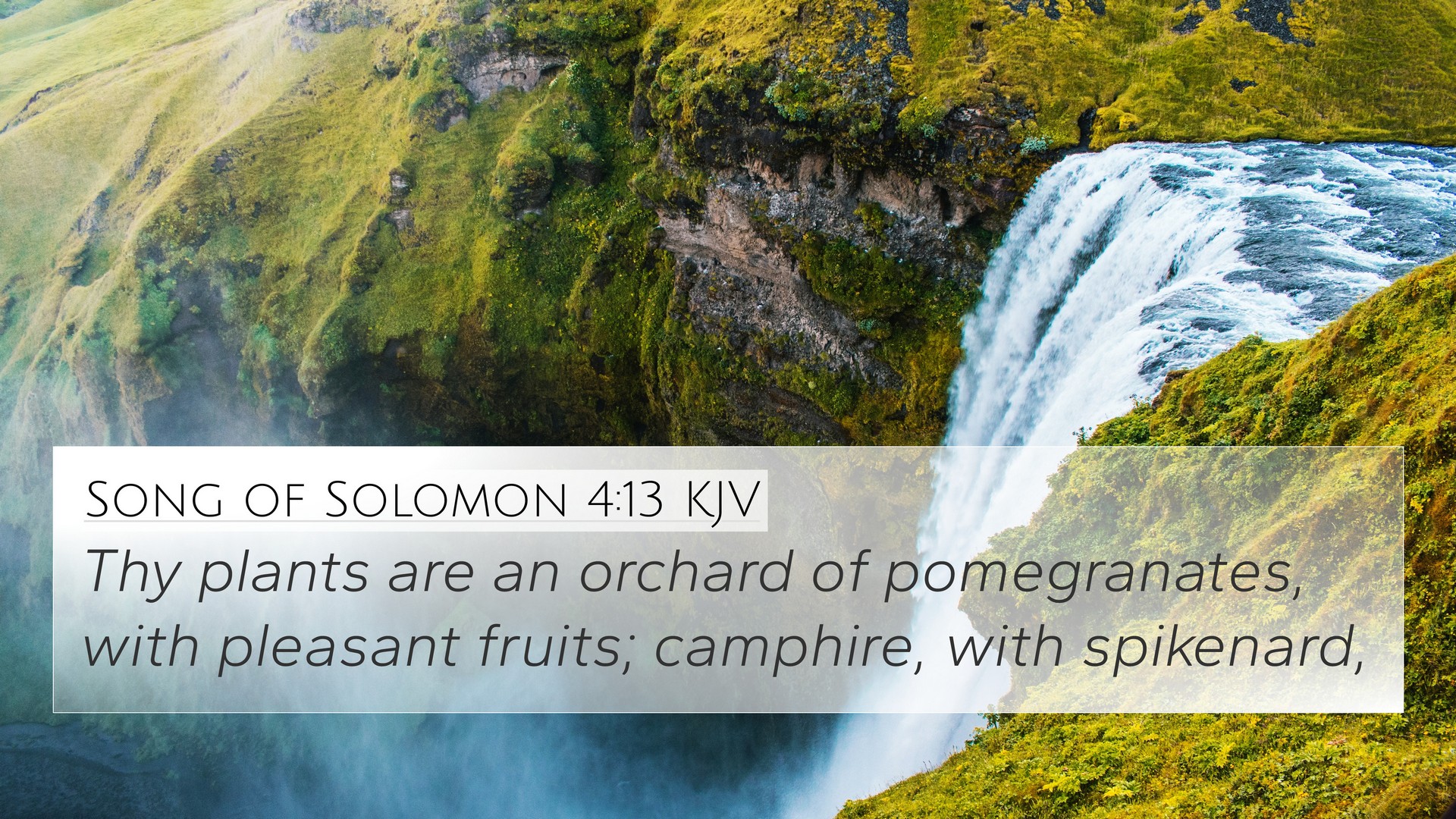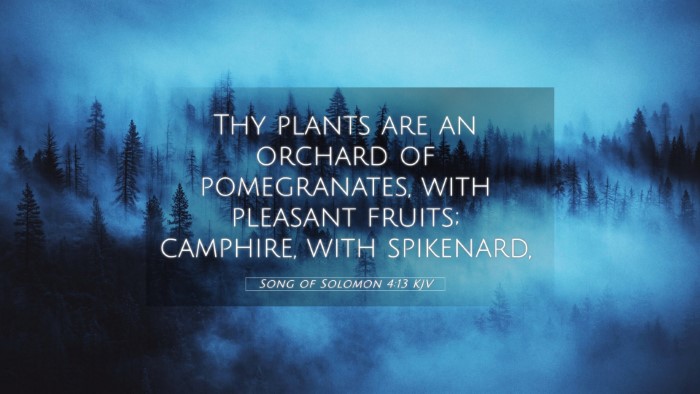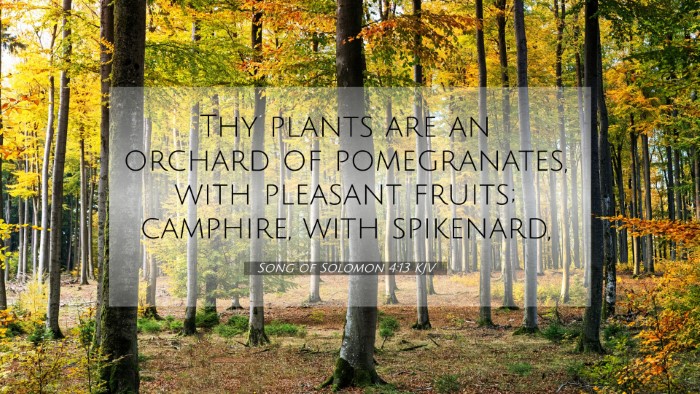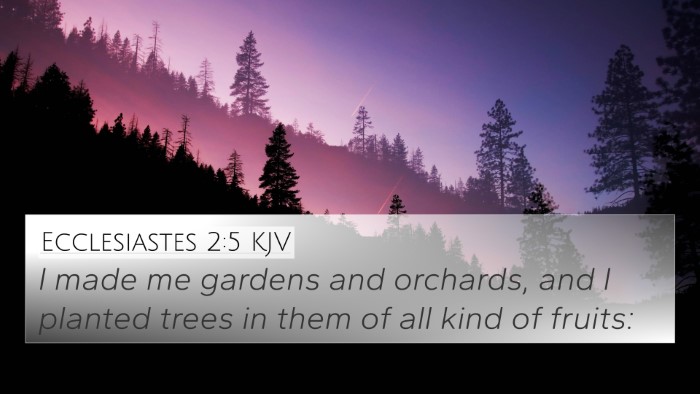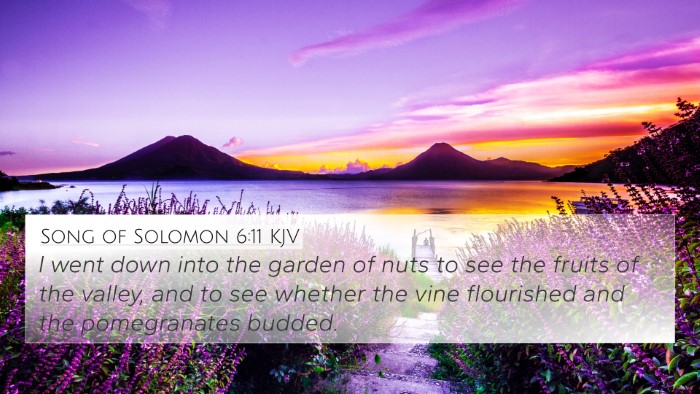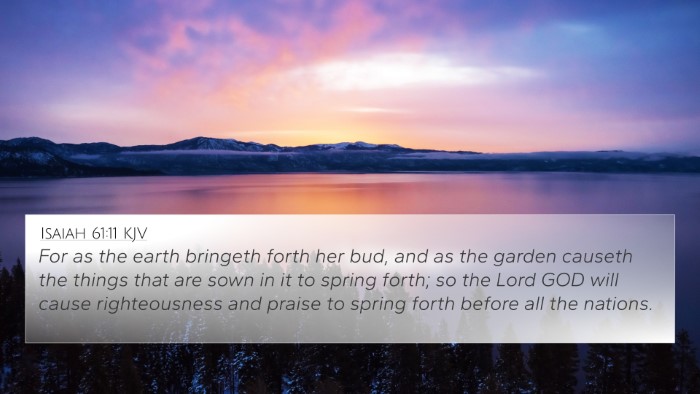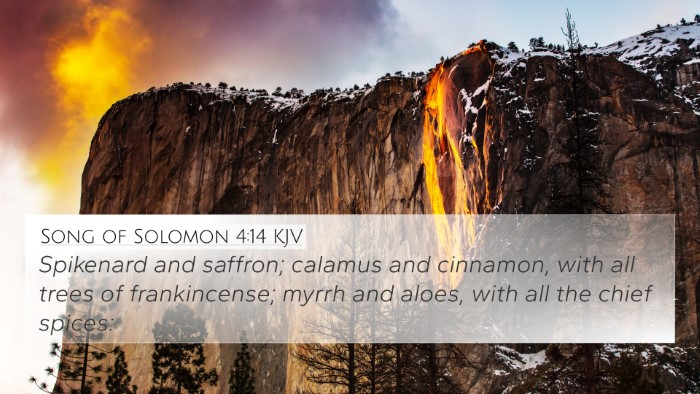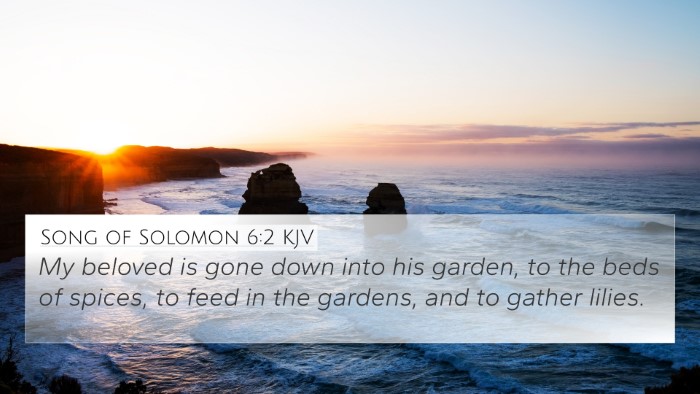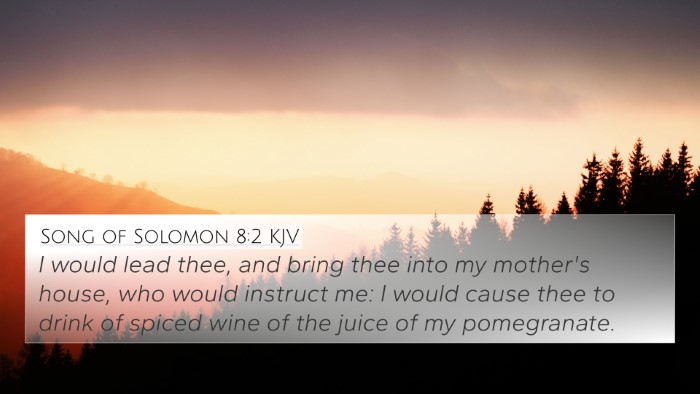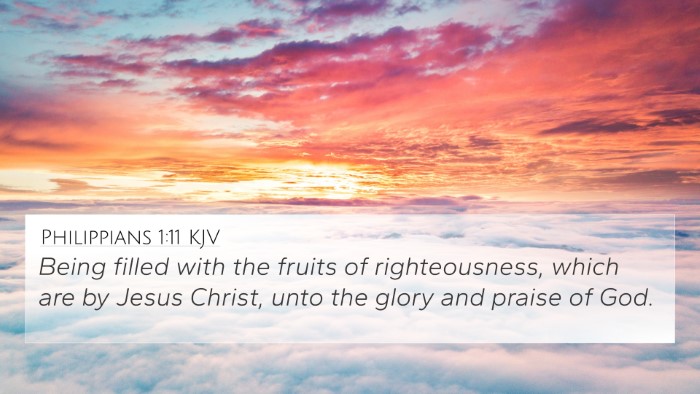Understanding Song of Solomon 4:13
The verse Song of Solomon 4:13 reads:
"Thy plants are an orchard of pomegranates, with pleasant fruits; camphire, with spikenard."
This verse is rich in metaphorical language, encapsulating the beauty and sensuality of love as celebrated in the Song of Solomon.
Meaning and Interpretation
This verse conjures imagery of a lush garden, filled with fragrant and beautiful plants, symbolizing the beloved's attributes and the deep appreciation of the lover towards her. The use of the pomegranate, known for its many seeds, may symbolize fruitfulness and fertility, while camphire and spikenard are indicative of preciousness and value.
Commentary Insights
Matthew Henry's Commentary
Matthew Henry emphasizes the metaphor of the garden in this verse, suggesting that it represents the beloved’s qualities. The pomegranate, associated with beauty and abundance, symbolizes the richness of love and attraction. Henry points out the specific mention of 'pleasant fruits', indicating not just physical beauty, but also spiritual and emotional delight found in the relationship.
Albert Barnes' Commentary
Albert Barnes notes that the terms used in this verse evoke a sense of paradise, where each plant symbolizes an aspect of the beloved’s virtues. The reference to spikenard, which was a prized ointment of ancient times, suggests a deeper intimate connection, revealing the beloved's value in the eyes of the speaker. Barnes underlines how these attributes of beauty serve to enhance love and desire.
Adam Clarke's Commentary
Adam Clarke interprets the botanical imagery as indicative of a fruitful relationship. He explains that the variety of plants represents the multifaceted nature of love – from romantic to spiritual. Clarke also points out that the text reflects the beauty of God's creation, drawing parallels between earthly delights and divine love.
Cross-References
To grasp the full beauty of Song of Solomon 4:13, one can explore several related verses that echo its themes:
- Genesis 1:28 - The command to be fruitful and multiply resonates with the pomegranate symbolizing fertility.
- Proverbs 5:18-19 - Celebrating marital love as joyful and fulfilling links directly with the affectionate tone of this verse.
- Song of Solomon 2:3 - Comparisons to fruit trees highlight the allure and sweetness found in romantic relationships.
- Isaiah 58:11 - The imagery of gardens and growth reflects the spiritual fruits yielded by a loving relationship.
- Luke 6:44 - This verse correlates with the idea of good trees bearing good fruit, emphasizing the nature of love.
- 1 Peter 3:4 - The value of inner beauty is echoed, aligning with the notion of hidden treasures in relationships.
- Galatians 5:22-23 - The fruits of the Spirit as a loving response exemplify the qualities referenced in Song of Solomon.
- Revelation 22:2 - The tree of life bearing fruit in heaven reflects the eternal aspect of love highlighted here.
- Proverbs 31:30 - The focus on inner qualities affirms the idea that true beauty transcends physical attributes.
- Matthew 13:23 - The meaning of fruitful soil is indicative of responsiveness to love and growth.
Exploring Thematic Connections
The imagery and themes presented in Song of Solomon 4:13 can be linked to broader Biblical motifs, encouraging readers to delve into the richness of scripture through Bible verse cross-references. By engaging in comparative Bible verse analysis, one can uncover profound connections that enhance understanding of both Old and New Testament teachings.
Tools for Bible Cross-Referencing
For those wishing to study interconnected themes in scripture, utilizing a Bible concordance provides a foundational resource. Engaging in cross-reference Bible studies allows one to uncover layers of meaning and context.
Conclusion
Song of Solomon 4:13 stands as a testament to the beauty of love, artfully expressed through nature's metaphors. Engaging with its insights through public domain commentaries offers a deeper appreciation for the rich tapestry of scripture, while cross-referencing Biblical texts allows for an elevation in understanding, encouraging readers to connect various themes across the Bible.
